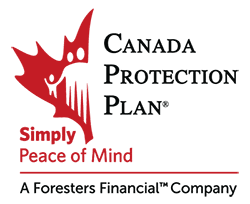
It can feel like our financial education didn’t go beyond learning how to use a piggy bank. That lack of financial literacy hasn’t stopped Millennials from empowering themselves. A 2019 report from the Government of Canada found that more than half of Canadians aged 18 to 34 (56%) took steps to strengthen their financial knowledge.
It’s no surprise that young adults – generally defined as 18 to 25 – want to broaden their financial knowledge. You are, after all, dealing with an ever-changing number of financial pressures at this stage of life. From post-secondary education to weddings, first homes, and babies, money is top-of-mind for every life milestone reached.
To lower your stress and help you feel more in control of your financial future, you need to prepare for it. Here are four critical areas of focus to help you manage spending and saving throughout young adulthood so that you can transition into your 30s and (gulp) 40s with confidence and a solid financial foundation!
Budgeting: The First Step in Managing Your Money
A budget is the one critical tool that can help you manage your day-to-day finances, pay your bills on time, and control your debt.
Once credit enters your life, you can buy what you want when you want it. You have the option to pay now and ask questions later. Budgeting flips the script in this buy-now philosophy. Budgeting is an act of self-control, showing that you are concerned about where your money is going and what you can afford.
Not all budgets work for everyone; some styles of budgeting are better suited to different personality types. Some people want to account for every penny; others just want to know that they are saving and are okay with spending a little more freely. Here are two simple but effective budget philosophies that may work for you:
Savings-First Budgeting
You need to pay yourself first. You have probably heard this financial cliché from a parent or in a book. It is a save-first philosophy and it has merit. The premise is simple: when money comes into your account, put a specific amount (e.g. 5 or 10% into your TFSA, RRSP, or savings accounts first before you start spending it. You can also setup automatic transfers to your savings account. Saving doesn’t always seem like a realistic goal when you’re young, your expenses are high, and your income is on the lower end. How can you save when almost all your income goes to food, rent, utilities and car payments?
The key is to start small; even if you can only afford to save 1% of your monthly income, you’ll have more time to work towards your financial goals if you start the habit now. As your income grows try to increase your contribution percentage and get compound interest working for you!
The Spending to Zero Budget
As your amount of disposable income grows, you may consider adopting this budgeting method. The zero-budget approach focuses on the money you have left over each month after paying your bills and paying yourself in a savings account of your choice. This budgeting method asks you to smartly pre-plan how you’ll use the remaining sum by building budget allocation categories like clothing, entertainment, and anything else.
Assign your spending money to each category until there is no money left. This philosophy gives you the flexibility to allocate money where it’s needed while helping you avoid impulse spending on items or services outside this allotted budget. In the summer, you may add a bunch of money to your home improvement budget. In December, buying gifts or travel tickets may take up your leftover money.
The suggestions above are only a small sampling of budget methods available for you to try; don’t get discouraged if these don’t work for you. Check out this page for other great budgeting methods and resources, including free smart budgeting apps that help you take all the guesswork out of managing your monthly spending.
Turn Many Debts into One Debt
If you feel like you’re drowning in debt, you are not alone. Almost one-third of Canadians say they have too much debt. The first step in reducing your debt load is to pay off your high-interest debt. High-interest debts, like credit cards, are considered toxic debt because they grow quickly and will hurt your ability to save. By sacrificing a little now to pay them off faster, you will save more in the long run.
There are ways to help you lessen the burden of a debt load that feels difficult to manage. You can explore debt consolidation if you have multiple loans. As the name suggests, debt consolidation covers all outstanding money owed, consolidating all your debts into one single loan that you pay over a given period. The merger of debt into one loan may provide some benefits:
- You only make a single payment each month.
- You may pay less interest.
- Your monthly payments could be lower.
Talk to your bank or financial planner to see if debt consolidation is a good option for you.
Negotiate Prices
People often think that making more money will solve your financial issues. But unless you consistently work towards managing your expenses, your bank account will be just as sparse at the end of each month, no matter your revenue. Therefore, it’s a great idea to get in the habit of consistently evaluating and lowering your monthly bills through savvy negotiation, so you can grow your savings and improve your financial health.
You can negotiate your regular monthly bills like your cellphone, internet, cable, and streaming services (and more). All it takes is a phone call to see if they can lower your rates.
Experts say there are a few things to keep in mind when inquiring about lowering bills. First, be kind. If you are adversarial, there is little chance the person you’re negotiating with will not go the extra mile to help you out.
You should also be knowledgeable. Find out what the competitors are charging. If you say that you will switch providers to save $30 per month, your current provider may be more likely to offer you an incentive to stay.
Take the time to evaluate your subscriptions. Many video and music services offer family plans that can help you save. Be sure to get rid of subscriptions that you are no longer using.
NOTE: If the idea of making a series of calls to negotiate your services sounds overwhelming, businesses are specializing in negotiation services will do the dirty work for you. These businesses will negotiate your bills and subscription services on your behalf, helping to squeeze the most savings out of your providers for a small fee.
Future Planning
As you get older, a few significant acronyms will creep to the top of your priority list: RRSP, RESP, TFSA, to name a few. Every one of these savings accounts and programs can be essential for your long-term financial health. The good news is the younger you are, the more time your savings and investments have to grow. If you establish good habits now, you’ll benefit in the future.
Since time is on your side, your RRSP contributions now will go a long way; even just $50 every two weeks can make a huge difference. Be sure to check if your employer has an RRSP matching program. If they do, maximize the matching incentive—it’s free money.
Life insurance – another valuable financial tool – can be cheaper when you’re younger and healthier. You will likely incur large debts in the near term, like a mortgage, and a life insurance policy can help protect your loved ones from these expenses in the event of the unexpected. Like an emergency fund, a life insurance policy is a smart way to plan for life’s “what ifs”.
There’s Support Out There
Personal finances can be overwhelming, especially if you are new to financial literacy. There are professional financial planners across Canada that can support you. If you can afford it, planners can handle more than investing and help guide you as you map out your short and long-term financial goals and how you plan to get there.
To learn more about how Life Insurance can be a critical part of your financial plan, speak to your financial advisor or call Canada Protection Plan for a free no-obligation quote. Securing coverage while you’re young and healthy will allow you to take advantage of great rates while enjoying peace of mind that your loved ones are financially protected.


BLG584-1121EN







